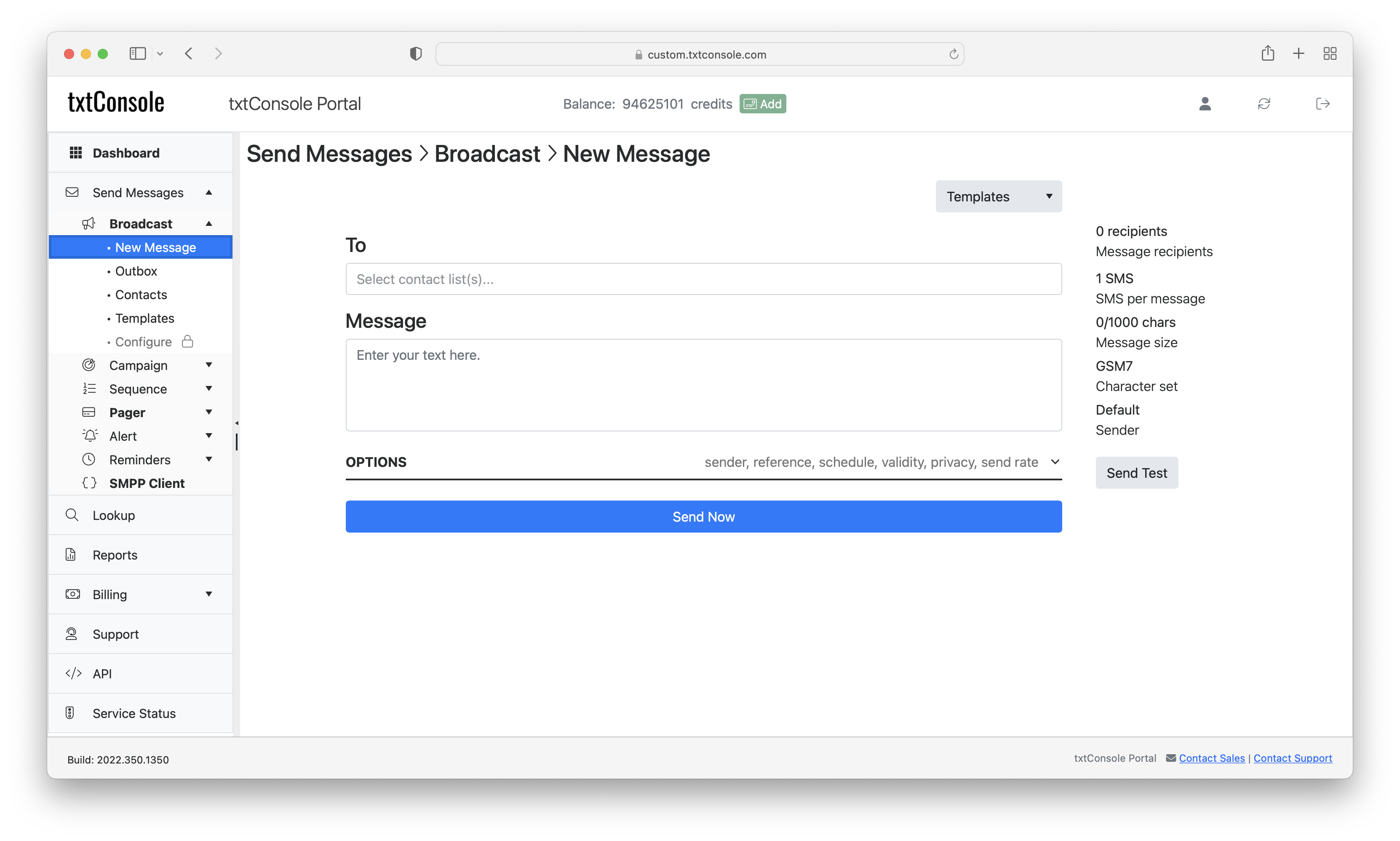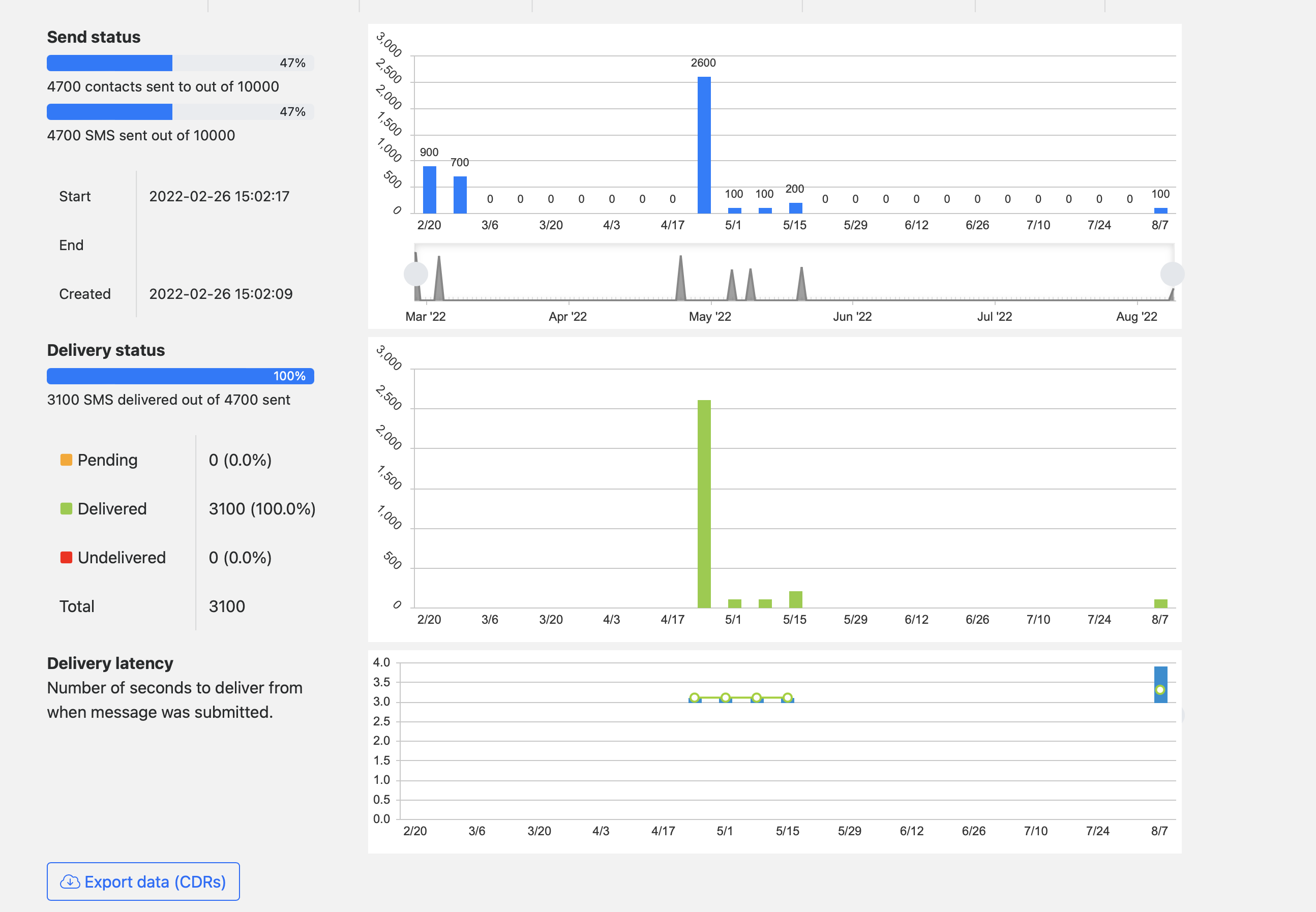Broadcast
Message large groups of mobile users

The Broadcast application is used to send messages to pre-defined contact lists that contain the mobile numbers, and optional other details, relevant to mobile contacts.
The application is accessed in the Send Messages > Broadcast section.
The steps for sending a message to a list of mobile contacts are:
- upload a contacts list (if not already uploaded)
- select contacts list(s) in To field
- enter message
- click Send Now button
Contacts
Contacts can be uploaded in the Send Messages > Broadcast > Contacts section. Either drop a CSV file into the dotted area under "Add contact list" or click its "Upload contacts" button. A name for the contact list can optionally be provided - if none is provided, the filename of the uploaded file is used.
The first field in each line of the CSV file must contain the mobile number. Additional fields may include details such as names or other information. These details can be inserted into the message by referencing the field number within curly brackets (e.g. use "{2}" to include the second field after the mobile number).
MobileNo,FirstName,LastName
447700000000,Tom,Smith
447700000001,Peter,Lane
447700000002,Mark,Jones
447700000003,Jim,Barns
447700000004,Alexa,Norris
447700000005,Zack,ChipBy clicking the "Message" button in the table of contacts, you can start to compose a new message.
New Message
The To field is used to select one or more contacts lists to where the message is to be sent.
The message text is specified in the Message field. It can be a long or short message, and can contain "Latin", "GSM" or "UCS2" characters. Select a template from the drop-down for a pre-defined message.
The "Send Test" button can be used to send the message to an individual mobile number to check how it will appear when sent to those in the To field.
Options
Under the "Options" section, the sender address of the message can be entered. This address will default to that configured as the "Default source address" for the customer's SMPP account in the SSG Admin Portal.
If a list of source addresses has been configured for the customer SMPP account, a dropdown list will be shown that can be used. See customer SMPP accounts. If no list is configured, the user can enter the source address they require. A default address will be profiled if one has been configured.
If you wish to schedule the message to be sent later, then the date/time can be specified using "Scheduled delivery".
A message "reference" can be entered to identify the message in the "Outbox" section.
The "send rate (SMS/sec)" can be used to specify how quickly the message is sent.
Outbox
View the status of sending your message and the delivery of those message.

Export report
Select the individual broadcast from the Outbox to show send status, delivery status and delivery latency, then click "Export data (CDRs)".
Templates
Message templates can be defined for quick compositing of pre-defined messages. For example:
Retail: "Dear valued customer, we’re excited to announce our new product launch! 🎉 Stay tuned for more details and exclusive offers coming your way. Thank you for being a part of our community!"
Staff communication: "Attention all staff: We’re pleased to share important updates regarding our upcoming projects and company initiatives. Please check your email for detailed information. Your commitment and hard work are greatly appreciated as we move forward together."
School: "Dear Parents, This is a reminder that Parent-Teacher Conferences will be held next week. Please ensure you have scheduled a time with your child’s teacher. We look forward to discussing your child's progress. Thank you for your continued support!"
Updated 8 months ago
